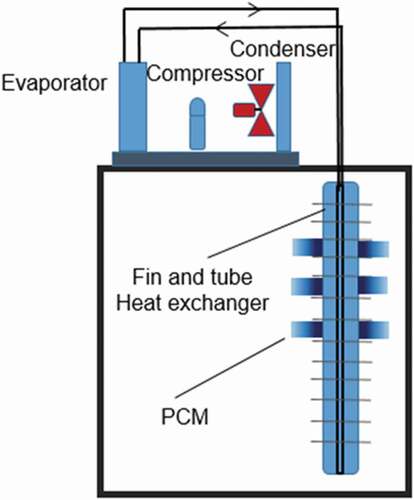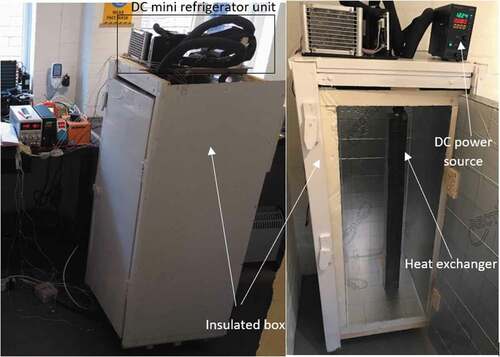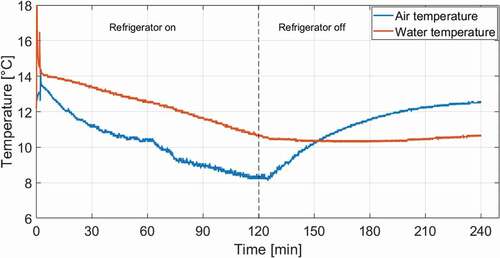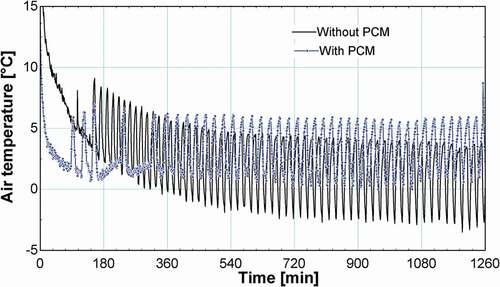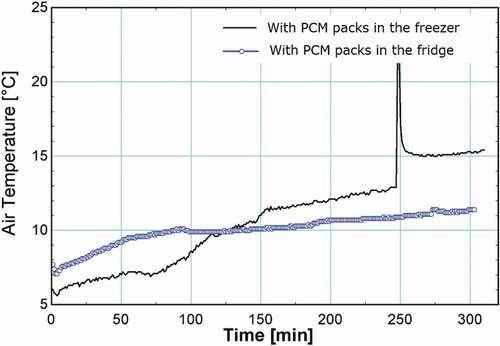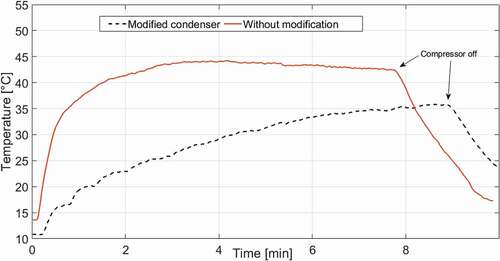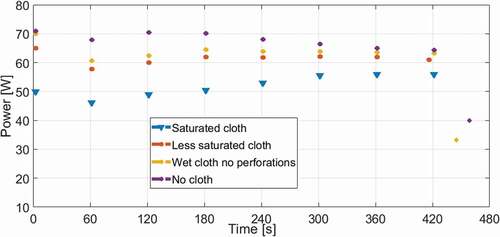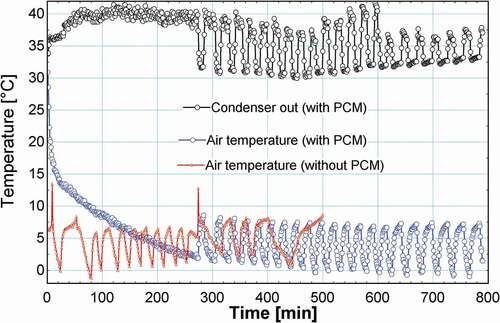Figures & data
Table 1. Application of PCM in fridges (the text is arranged in the format of PCM name – melting temperature – performance improvement)
Figure 1. Weak-grid electricity supply conditions for some developing countries (World Bank Citation2019)
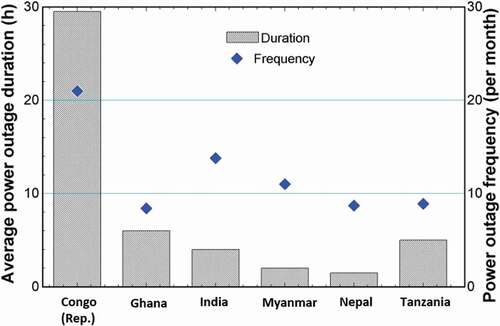
Table 2. Datasheet of the chiller and properties of the refrigerant and the secondary fluid
Figure 6. Thermal performance test results of the PCM with water bath, which was taken in PCM Products Ltd
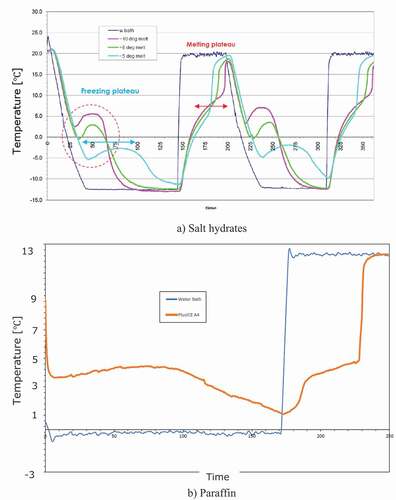
Table 3. Thermophysical properties of water, plusICE hydrated salt S5, and plusICE organic A4 (Phase change material products Citation2020)
Figure 8. The modified fridge with the installation of a micro-compressor and PCM packs for onsite testing in Ghana
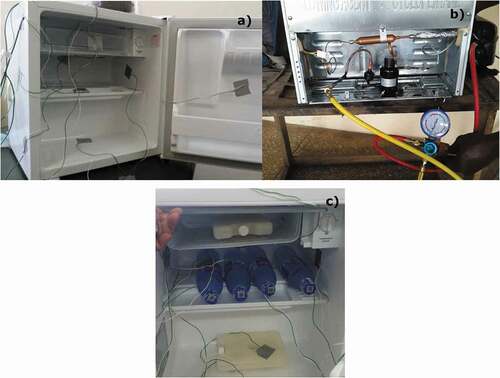
Figure 9. Temperature variation of empty cabinet (no PCM containers, no water bottles, compressor: on)
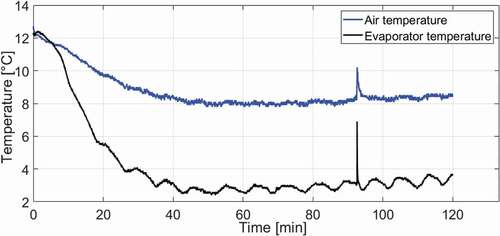
Figure 10. Temperature variation of water and PCM surface (six PCM containers, one water bottle, compressor: off)
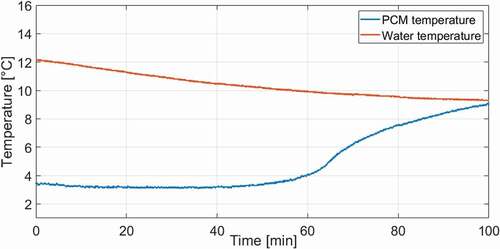
Figure 16. The condenser outlet temperatures of the fridge with an unmodified and modified condenser, respectively
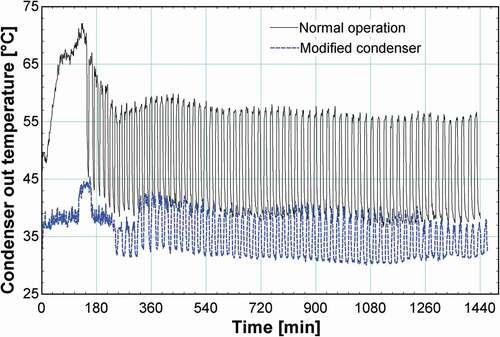
Table 4. Summary of cost breakdown of the system
Table


